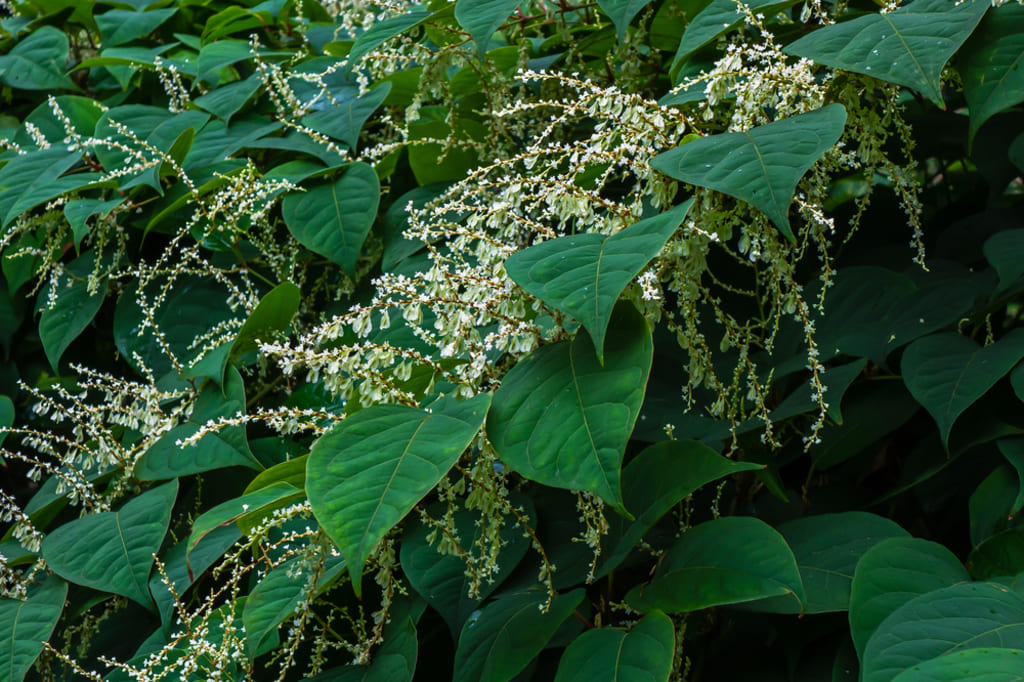
Japanese knotweed is a fast-growing, clump-forming perennial plant with tall and dense stems. By exploiting the small openings in pipes or cracks in barriers such as concrete, the plant causes serious damage & sometimes even breaks apart these structures.
Known for its rapid growth, this invasive plant no wonder leaves homeowners worried for several reasons, including property damage, reduced house prices, and more. It is said to cost taxpayers millions of Pounds per year, and the situation only gets worse as the plant has continued to spread across more properties across the UK.
Japanese knotweed growth cycle
Understanding Japanese knotweed identification and the growth cycle is important to get the right treatment for it. Like most other plants, Japanese knotweed doesn’t grow throughout the year and has a seasonal life cycle that develops through different seasons in response to the varying environmental conditions.
Typically, knotweed is quite tall, up to 3m but may vary in height depending on the season. Besides, it has bamboo-like canes that grow in distinctive and dense clumps and spreads rapidly.
All these features give this invasive plant a distinctive appearance, making Japanese knotweed identification an easy task. However, it can sometimes be confused with plants, like Fallopia baldschuanica, Persicaria microcephala, and Leycesteria formosa.
Japanese knotweed identification and growth pattern in different seasons
Spring
April to May is the time when new season knotweed stems generate from the underground rhizome system of the plant, using energy stored within to stimulate rapid growth. Bud-like shoots that are red in colour appear first just a few millimetres high from the ground. With the rise in the weather temperature, the buds erupt and begin to grow as stems. In mature knotweed plants, the rate at which they typically grow is 12-18 cm a day. Emergent stems when 10-20 cm high may look like asparagus spears, but soon develop a distinctive appearance when branches and leaves unfurl.
Summer
Japanese knotweed identification is the easiest in summer as it is the peak growing season for the plant. By early summer, the stems of the plant reach full height which is typically 2.5-3 m high in mature plants and sometimes higher than that, especially in giant knotweed. By June to July, knotweed starts growing at the rate of several centimetres a day. The free-standing canes of the plant develop purplish speckling near the base and are covered by a dense canopy of foliage at the sides as well as above the stand. This dense canopy blocks the sunlight and stymies the knotweed growth below.
Autumn
By late summer and early autumn, you see clusters of tiny cream-coloured flowers on the plant. The growth of knotweed usually slows down during this time of the year. The plant prepares for the winter season ahead by re-absorbing all the essential nutrients back into its underground rhizome system. This turns all the leaves as well as stems yellow and then brown as the parts of the plant above the ground die off.
Winter
Winter is the most difficult time of the year for Japanese knotweed identification since the plant dies off and enters the dormant phase during this season. But do not be fooled. Its rhizome system is present beneath the soil, all set to emerge again when spring returns and temperatures rise.
If you have any questions, please feel free to contact our Japanese knotweed management team at CYB Environmental, and we will be happy to help. You can also call us on 020 3005 8755 today!

